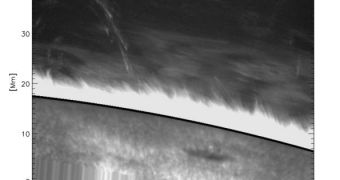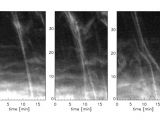The huge ball of fire that gives us our daily heat and allows for life to form on the planet is the last place in the solar system where someone would expect to find rain, yet a form of it does indeed occur. Now, astronomers believe that this may help explain why the temperature in the corona, the outer atmospheric layer of the star, is so hot, hotter than estimates predicted it should be.
The rain that covers the Sun should not for a single second be compared with the one we have back on Earth. Experts use this term loosely, to describe dense, knotty filaments of gas, cooler than the temperatures around them, but still heated at hundreds of thousands of degrees Celsius. These formations fall from the star's upper atmosphere to the corona at a speed of about 100 kilometers per second, NewScientist reports.
“There's just this constant rain of these blobs that seem to be coming down from high up,” Judy Karpen, who is an expert at the NASA Goddard Space Flight Center, in Greenbelt, Maryland, explains. “Offering a high contrast in intensity with respect to the background (either bright in emission if observed at the limb, or dark in absorption if observed on disk) these cool blobs are often observed falling down from high coronal heights above active regions,” experts write in a new study detailing the finds, published online in the journal arXiv.
The entire process, researchers say, is very similar to raindrop condensation. Small explosions low in the solar atmosphere, called nanoflares, heat the corona, spewing out the gas filaments. Their energy is then emitted through the upper layers of the corona, and the cooled gas flows back to the lower regions of the atmosphere. The blobs “cool down and when [they] get really dense they forms these blob- like features,” European Space Agency (ESA) GSFC-based scientist Daniel Muller adds.
“Coronal rain may not only point to the spatial distribution of the heating in coronal loops, but also to the agent of the heating itself. We thus propose coronal rain as a marker for coronal heating mechanisms,” the experts add. Lead researchers for the new study have been Patrick Antolin and Kazunari Shibata, both affiliated with the Kwasan Observatory, at the Kyoto University, in Japan. Antolin also holds an appointment in the Institute of Theoretical Astrophysics, at the University of Oslo.

 14 DAY TRIAL //
14 DAY TRIAL // 
